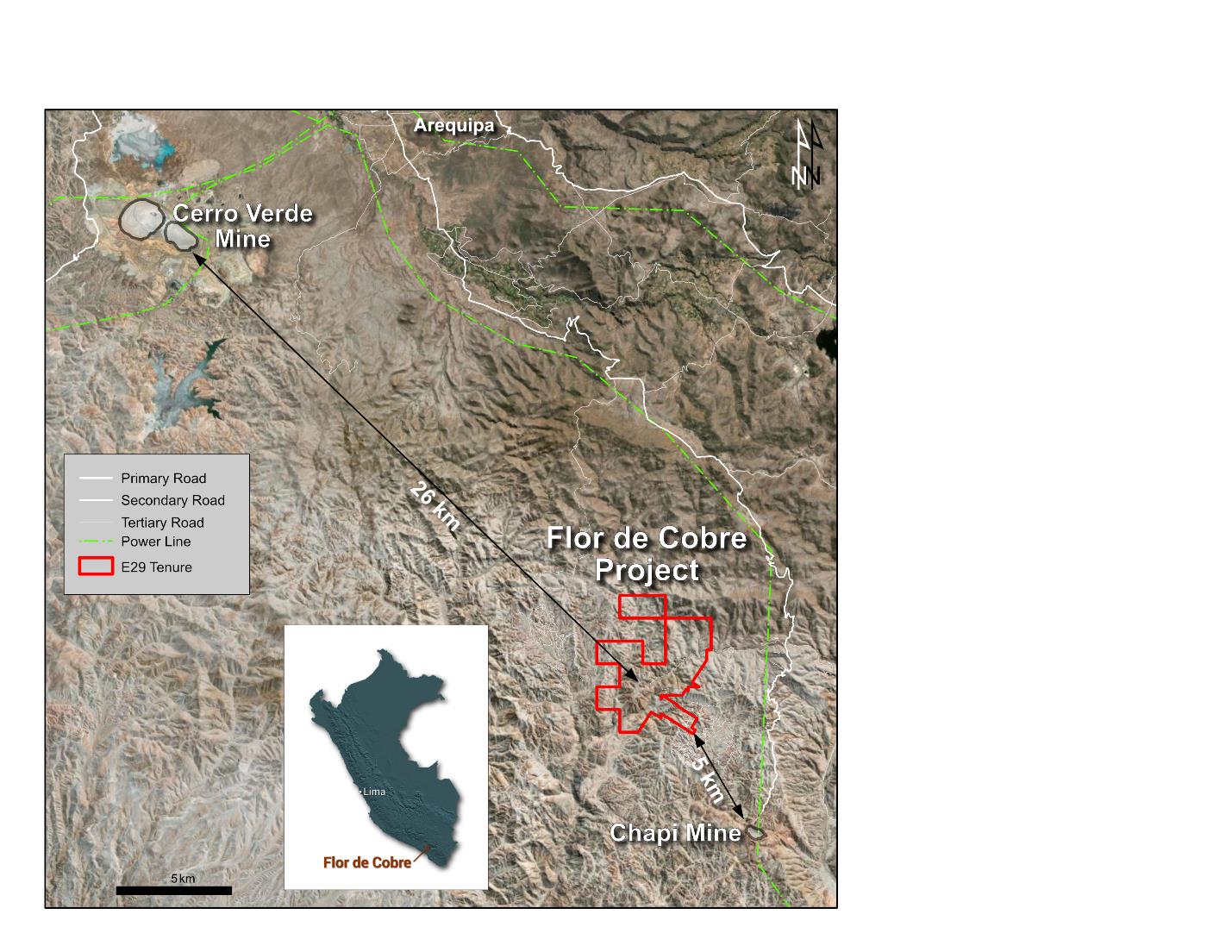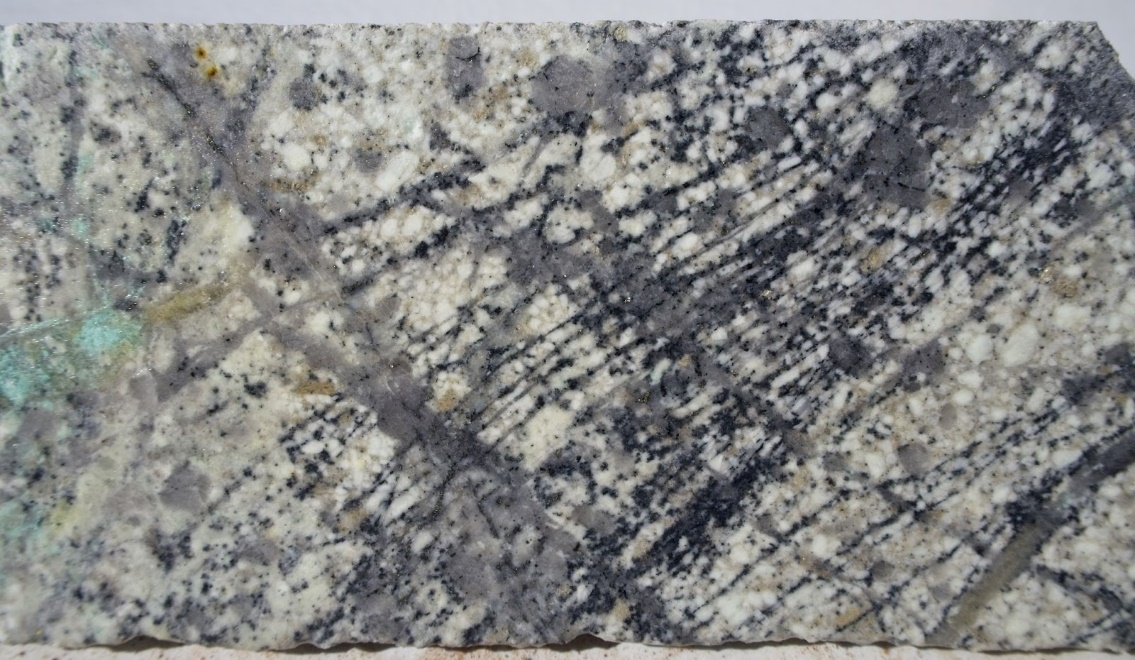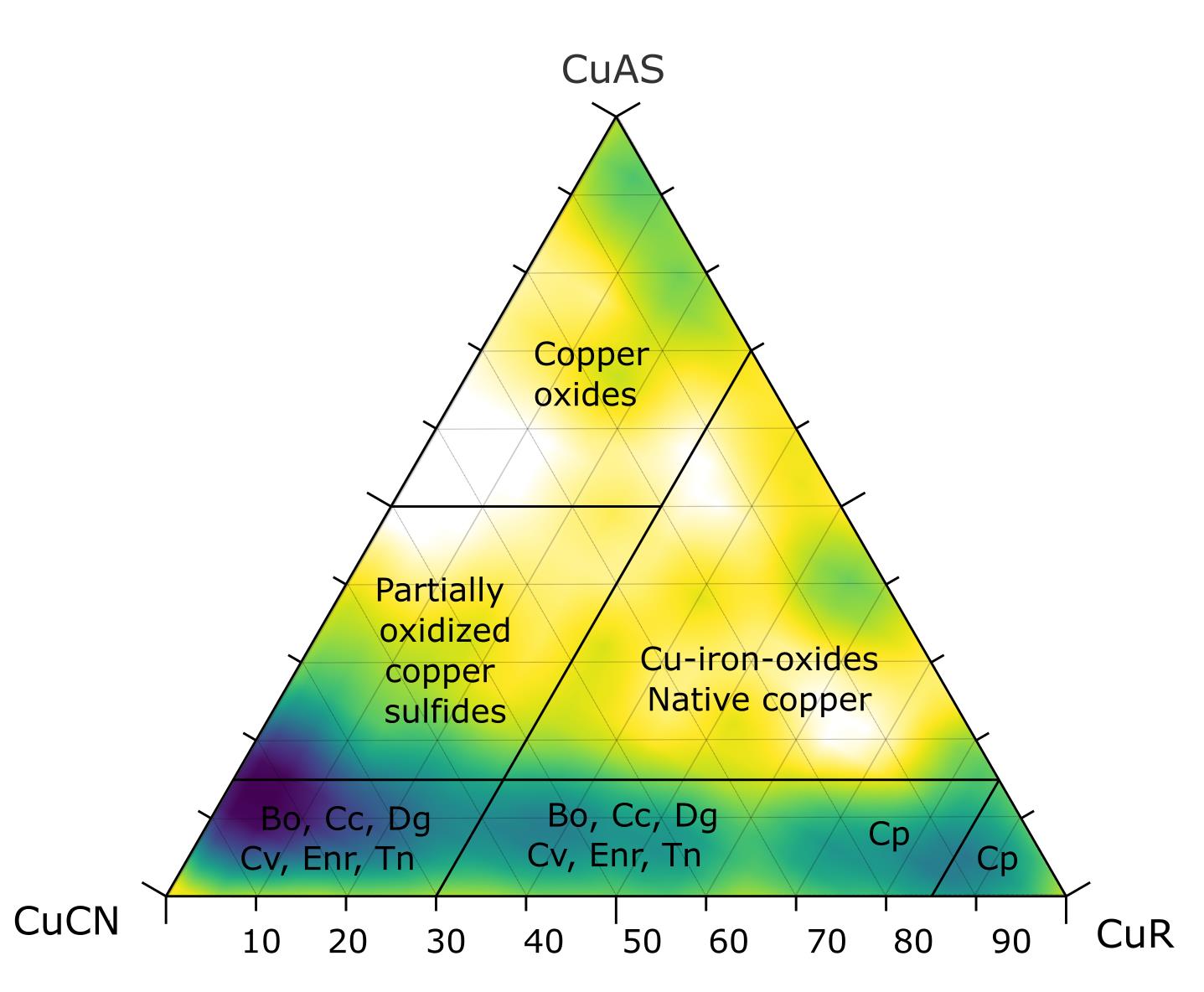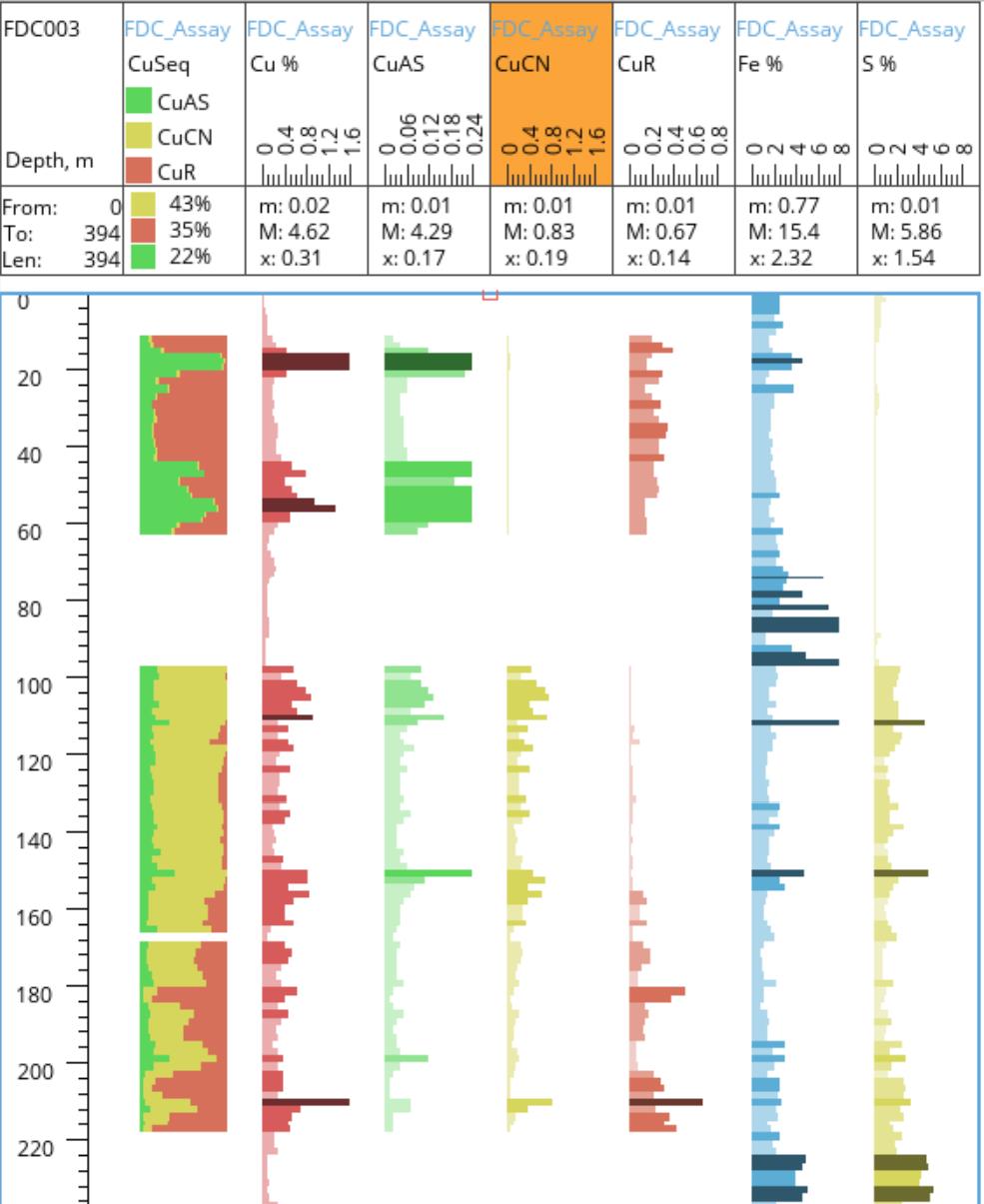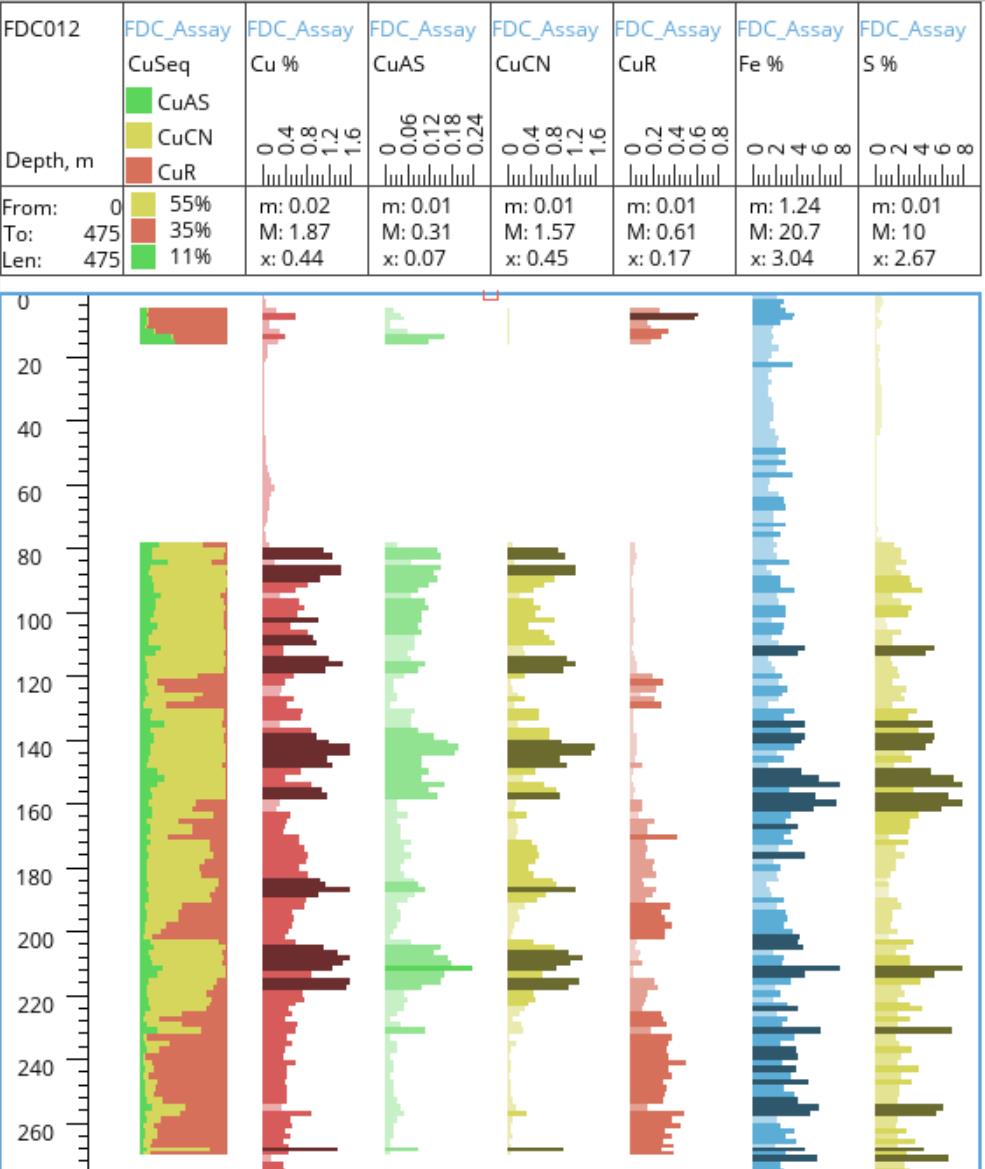Element 29 Reports Positive Sequential Copper Leach Results from the Flor de Cobre Project
Vancouver, Canada, February 22, 2023 – Element 29 Resources Inc. (“Element 29” or the “Company”) (TSX-V: ECU | OTCQB: EMTRF | BVL: ECU) reports positive results from sequential copper leach analysis of samples from the Phase 1 drilling program at its Flor de Cobre Copper Project (“Flor de Cobre” or “Project”) in southern Peru (Figure 1). Preliminary results indicate positive copper leach extraction characteristics from the chalcocite-dominated enrichment zone at Candelaria on Flor de Cobre.
Steve Stakiw, Element 29’s President and CEO comments, “We are greatly encouraged by this positive sequential copper leach data, which confirms our observations of a significant, high-grade enrichment zone dominated by the soluble secondary copper mineral chalcocite. Sequential copper leach analysis was undertaken on an extensive drill core sample set from the supergene enrichment profile to provide representative initial information on the leach characteristics of enriched mineralization that will be a valuable contribution to designing follow-up copper metallurgical test work.”
Flor de Cobre is a near-surface, porphyry copper-molybdenum mineralized system (Figure 1) located in the Southern Peru Copper Belt approximately 26 kilometres (“km”) southeast of the Cerro Verde copper mine.
Sequential leach analysis was recently undertaken on 1,233 metres (“m”) of drill core (674 samples) representing a significant sample set of the secondary copper enrichment intervals from the 12 drill holes completed by the Company at Flor de Cobre in 2022. Sequential leach analysis is an established geochemical technique used to examine the solubility of copper minerals in a series of different solutions to indicate proportions of soluble oxide minerals, soluble secondary sulphide minerals, and primary copper minerals. Results can be used to identify mineral zones for metallurgical sampling and testing, indicate types of technologies and reagents to use, contribute to evaluation of process route options, and eventually inform geometallurgical modelling, and a prediction of recoveries as the company advances toward a potential development path.
The sequential analysis indicates the main enrichment zone at Flor de Cobre is dominated by soluble secondary sulphide with a minor copper oxide component, which is consistent with visual observations of chalcocite, malachite, and chrysocolla in drill core (Figure 2). The ternary diagram (Figure 3) displays the sequential copper assays and estimates the proportions of leachable oxide, leachable sulphide, and primary sulphide copper minerals. Minor amounts of refractory minerals are present in oxide zones perched above the main enrichment zone. Chalcopyrite is the dominant primary copper mineral observed in mineralization beneath the enrichment zone.
Results successfully confirmed the position of the enrichment zone as recognized from visual observations of mineralogy in each drill hole (Figure 4 and Figure 5). The contact between enrichment mineralization and the overlying leached zone is relatively abrupt and marked by the appearance of chalcocite. The lower enrichment contact is transitional over 10-50 m into the underlying primary, chalcopyrite-dominant zone.
Qualified Persons
The scientific and technical content of this news release has been reviewed and approved by Paul J. Johnston (PhD, P.Geo), Vice President of Exploration for Element 29, and is a “Qualified Person” as defined in National Instrument 43-101 Standards of Disclosure for Mineral Projects. The Qualified Person has relied upon Adam Johnston, AusIMM Chartered Professional (Metallurgy) who is Chief Metallurgist at Transmin Metallurgical Consultants for preparation, review and approval of metallurgical information.
Neither the TSX Venture Exchange nor its Regulation Service Provider (as that term is defined in the policies of the TSX Venture Exchange) accepts responsibility for the adequacy or accuracy of this press release.
About Flor de Cobre
Flor de Cobre is a porphyry copper exploration project that contains the Candelaria zone and the recently outlined Atravesado porphyry copper target. The property is in the Southern Peru Copper Belt and is 5 km northwest of Nexa Resources’ Chapi mine and 26 km southeast of the Cerro Verde mine owned by Freeport-McMoRan, Sumitomo Metal Mining, and Compañía de Minas Buenaventura. Candelaria is a classic Andean porphyry system with primary copper sulphide mineralization associated with a multi-phase quartz monzonite porphyry complex. Weathering redistributed primary mineralization into a sub-horizontal enrichment blanket containing secondary copper oxide and sulphide minerals at the base of a hematitic leached cap. Remnants of the upper jarositic component of the leached cap overlying the hematitic cap are preserved on the higher hill tops around the Candelaria prospect. Atravesado is a porphyry copper exploration target located about 2 km northwest of Candelaria. An IP/Resistivity geophysical survey completed in 2020 outlined a core of moderate resistivity measuring 1.5 x 1.6 km that coincides with widespread copper oxide mineralization, strong copper geochemistry, and late-stage quartz monzodiorite porphyry dikes. The resistive core is surrounded by a high-chargeability halo corresponding with weathered quartz-sericite-pyrite alteration.
About Element 29 Resources Inc.
Element 29 Resources Inc. is an emerging copper exploration and development company focused on advancing its portfolio of Peruvian projects towards development in one of the world’s more established mining jurisdictions. Element 29’s growth strategy is led by our strong board and management, who have a proven track record of discovery and delivering significant value to our shareholders.
The Company’s principal objective is to explore and develop its Elida Porphyry Copper Deposit in west-central Peru and its Flor de Cobre Porphyry Copper Project located in the Southern Peru Copper Belt, 26 km southeast from Freeport-McMoRan’s Cerro Verde copper mine. Both projects are well located for potential mine development and will benefit from nearby infrastructure including roads, powerlines, ports, water, and a skilled workforce.
More information is available at www.e29copper.com.
For more information:
Steve Stakiw, President & CEO
1-888-246-7881
[email protected]
Forward Looking Statements
This press release contains certain forward-looking information and forward-looking statements within the meaning of applicable Canadian securities legislation (collectively, “Forward-looking Statements”). All statements, other than statements of historical fact, constitute Forward-looking Statements. Words such as “will”, “intends”, “proposed” and “expects” or similar expressions are intended to identify Forward-looking Statements. Forward looking Statements in this press release include statements related the Company’s resource properties, and the Company’s plans, focus and objectives.
Forward-looking Statements involve various risks and uncertainties and are based on certain factors and assumptions. There can be no assurance that such statements will prove to be accurate, and actual results and future events could differ materially from those anticipated in such statements. Important factors that could cause actual results to differ materially from the Company's expectations include uncertainties related to fluctuations in copper and other commodity prices, uncertainties inherent in the exploration of mineral properties, the impact and progression of the COVID-19 pandemic and other risk factors set forth in the Company’s prospectus under the heading “Risk Factors”. The Company undertakes no obligation to update or revise any Forward-looking Statements, whether as a result of new information, future events or otherwise, except as may be required by law. New factors emerge from time to time, and it is not possible for Element 29 to predict all of them or assess the impact of each such factor or the extent to which any factor, or combination of factors, may cause results to differ materially from those contained in any Forward-looking Statement. Any Forward-looking Statements contained in this press release are expressly qualified in their entirety by this cautionary statement.
Figure 1. Regional setting of the Flor de Cobre Project is in the Southern Peru Copper Belt, between Freeport McMoRan’s Cerro Verde mining complex and Nexa Resources’ Chapi mine. The project is at a moderate elevation of less than 2,700 m, is road accessible, and is close to excellent infrastructure for mine development and operation.
Figure 2. A specimen of drill core from drill hole FDC012 at 81.4 m within a sampled interval from 79.9 to 81.6 m reporting total Cu of 1.1%. Sulphuric acid leach (CuAS) was 0.14% Cu, sodium cyanide leach (CuCN) was 0.90% Cu, and four-acid leach (CuR) was 0.04%. This indicates most Cu is contained in the mineral chalcocite and a minor amount of Cu occurs as Cu oxide, which is the green mineral on the left side of the photograph. Chalcocite is the black mineral forming lines diagonally across the specimen and disseminated black points.
Figure 3. Ternary diagram used to display results (674 samples) from sequential leach analysis for data from Flor de Cobre. The proportions of copper reported in sulphuric acid, sodium cyanide, and four-acid solutions are plotted where the triangle vertices represent a 100% proportion for each solution. The plot shows most of the copper is leached by the cyanide solution (CuCN), indicating the dominant minerals are a soluble copper sulphide mineral such as chalcocite. Samples plotting towards the sulphuric acid vertex (CuAS) contain copper oxide minerals and samples plotting toward the four-acid vertex (CuR) indicate presence of chalcopyrite. Results are consistent with visual mineral observations. Dark colours (blue) on the diagram indicate a high density of samples, lighter colours (yellow) indicate a low density of samples.
Figure 4. Profile of drill hole FDC003 showing Cu grade with the proportions of Cu given by sequential leach analysis. This hole intersected copper oxide mineralization from 14.35 to 61.30 m. The main copper enrichment zone is from 97.20 to 164.50 m. The abrupt upper contact of the enrichment zone is visible in the Cu% column. A transitional zone containing chalcocite and chalcopyrite persists to approximately 215 m. The remainder of the hole intersected primary sulphide (chalcopyrite) mineralization. The profile shows the portion of the hole where sequential analysis was completed. FDC003 was drilled to a depth of 394 m.
Figure 5. Profile of drill hole FDC012 showing Cu grade with the proportions of Cu given by sequential leach analysis. The abrupt contact of the enrichment zone at 79.9m is visible in the Cu% column. The enrichment zone (79.9 – 180.0 m) is dominated by CuCN, which measures soluble copper sulfide minerals such as chalcocite. A transitional zone containing mixtures of chalcocite and chalcopyrite extends to 232.0m. The remainder of the hole intersected primary sulphide (chalcopyrite) mineralization. The profile shows the portion of the hole where sequential leach analysis was undertaken. FDC012 was drilled to a depth of 475 m.


